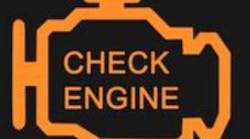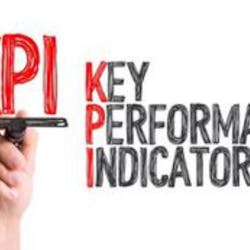Flying, driving, and the importance of key performance indicators in your dental practice (video)
You wouldn't consider driving your vehicle without the benefit of your gauges and dashboard. Why would you "drive" your dental practice without that necessary guidance? Here are the key performance indicators (KPIs) all dentists should be aware of.
This article was originally published September 12, 2017, and updated with the addition of Dr. Aly's video on January 10, 2018. _________________________________________________________________________________________________________________________________
Imagine driving your favorite vehicle down a winding highway with your dashboard covered. This means no speedometer, tachometer, fuel gauge, oil gauge, temperature gauge, voltmeter, engine health, or any other indicators.
Wait! You mean I can’t see my speed so I may not be compliant with state speed laws? I can’t tell how much gas is left or how many miles I’ve traveled, or if my trunk is open or if my e-break is on?
I’m a licensed pilot and I fly often for work and leisure. As you know, airplanes also have dashboards. Gauges need to be checked frequently to assess the success of a trip. As you can see in the picture, the airspeed gauge tells me how fast the plane is traveling. The altitude indicator gauge tells me the angle of my bank and the angle of the ascend or descend. The altimeter lets me know how high I am in relationship to sea level. The compass is essential to navigation, and so on. There are many essential gauges. I can’t even remotely imagine flying without observing my gauges.
However, many dentists run their practices without observing their gauges. The check engine light has been on for a long time, but they can’t see it. What are these gauges and how can dentists see them? They are the key performance indicators (KPIs). This may not be news to you since more dentists are becoming aware of and tracking certain KPIs. However, not many know how important they are or what they mean. I’ll go over some of the essential KPIs and what they mean for your practice.
There are more than 100 KPIs that need to be tracked in a dental practice. Some of them are very essential, and some are simply good to know.
Let's go over some of the essential monthly KPIs
1. Number of new patients
Tracking helps to:
• Recognize patient growth or recession of your practice.
• Recognize trends in different seasons.
• Recognize marketing efforts and its effect on new-patient flow
2. Total patients seen
Tracking helps to:
• Study the relationship between the number of new patients to the number of patients seen. The higher this ratio, the healthier the practice.
• Study the productivity of your office environment. How many patients can you see in a given day and month?
• Study the relationship between the number of patients and your total production. Different specialties have different ratios. A pediatric dental practice can see more patients and produce the same as a prosthodontic dental practice. Study the trend in your specific demographic and specialty.
• Study the relationship between the number of operatories, the number of providers, and the number of patients seen. We often see practices adding providers or operatories, but we see very little increase in the total number patients seen, which means less productivity and efficiency.
3. Average production per patient
Tracking helps to:
• Recognize trends in productivity per patient with different seasons, demographics, geographics, and psychographics.
· Recognize trends in each of your associates' productivity.
· Recognize trends with different clinical team members productivity. Some dental assistants and hygienists are great support staff for the dentists, leading them to be highly productive. You will be able to study these trends, especially with a change of staff.
4. Aging accounts (current, 30-60, 60-90, 90+):
It is crucial to study the aging trend. As accounts age, the probability of collecting them significantly decreases. Some insurance companies, including government payers, will not pay claims that are older than 90 days unless there was a dispute. Other companies will not pay any claims older than 120 days.
The general rules of decreasing aging:
1. Make sure the work on the front end is done properly. This includes verification of insurance, chart audits, validation, proper claims submission, and more.
2. Correct and resubmit unpaid claims as soon as possible.
3. Handle EOBs and aging as soon as possible.
4. Follow up on the progress and make sure the disputed claims have been paid.
5. Prevent errors from happening again via a feedback mechanism. Prevention is significantly better than disputing and fixing.
5. Total production
While it makes sense to track production, not many use the data to its full potential. Tracking production gives you a good idea of the seasonal trends, growth trends, operational effectiveness, and relationships with other operational factors such as the number of providers and support staff. Production should be split into treatment and hygiene production for further clarity.
6. Total collections
As you may know, production is just "Monopoly money." Not many entities care about what your practice management software said you have produced. It is all about what hits your bank account that counts toward your worth, in other words, what your tax returns are based on. Always make sure the collection numbers match what was deposited in your bank account.
7. Collections to production percentage
Tracking helps to:
• Reveal the health of your billing department. You should have more than 96% collections to production ratio to be considered a healthy practice.
• Reveal any inflation in your production numbers. This will greatly affect the percentage and will be highly discoverable. The biggest cause of this phenomenon is wrong fee schedules.
• Reveal long- and short-term defects in your billing process. The key is to observe this metric over an extended period of time in order to make the solid forensic analysis.
8. Adjustments
Tracking adjustments helps determine what your billing team is writing off as non-collectible. You'll be surprised what some billers consider as non-collectible. Adjustments are the key portal to embezzlement if done at the practice level by one of the front office team members. It is less likely to happen if you have a centralized (off-site) billing department since they are not the ones receiving the money at the office level. However, some central off-site billers are quick to adjust some collectible accounts to decrease their workload. Careful auditing is essential to avoid these hiccups.
9. Adjustments percentage
The total adjustments for the practice should be no more than 1% of the total production. In some cases, 1% to 2% is still considered in the healthy range.
10. Unscheduled treatment amount
The unscheduled treatment report shows you a list of patients that came in for an exam and were presented a treatment plan they never pursued. Consider this: out of 10,000 people reached by your marketing campaign, 1,000 of them were influenced and 100 of them called the practice. From those 100, 80 showed up. From the 80 who were presented with a treatment plan, only 30 returned for the treatment. What happened to the other 50 patients?
Fifty patients times $400 average production per patient equals $20,000 in lost opportunity. Something went wrong during the patient experience that made these patients decide not to return. It could be financially driven, scheduling inability, or an error on the part of a dental team member. We would never know unless we studied the trend of unscheduled treatment reports, call the patients, and have them come in for a second evaluation or re-activation.
These are just some of the essential KPIs that every dental office should be tracking. I recommend using experts who have been down your road before and have mastered the art and science of metrics tracking.
Remember that a dental practice is like any other medical entity and business—all the departments need to work together to produce the ultimate outcomes of exceeding patients' expectations, being an integral part of the community, and creating growth for jobs in the community and profits for the stakeholders.
If you’re already on your journey, it’s time to uncover your dashboard and use the tools right in front of you.








